HMS Indomitable
HMS Indomitable (pennant number 92) was a modified Illustrious class aircraft carrier of the British Royal Navy. The Illustrious class came about due to the 1937 Naval Progamme. She had been designed to the original configuration of the Illustrious class, but was soon revised to enable her to operate far more aircraft than her sister-ships were able to.
Construction and early history:
She was laid down by Vickers-Armstrong at Barrow-in-Furness, on 10 November 1937, as war loomed ever closer. She was launched on 26 March 1940 and commissioned the following year in October.
She sailed to the West Indies in November 1941 for her maiden voyage. While there, Indomitable ran aground on a coral reef near Jamaica, though she returned to service soon afterwards. This short delay proved fatal for British plans for Singapore: it had been planned that Indomitable was to join HMS Prince of Wales and HMS Repulse in the port of Singapore as part of a deterrent force, Force Orange, against Japanese aggression in the Far East. The other two capital ships, designated Force Z, did not have adequate air cover, and were sunk by Japanese aircraft (see Sinking of Prince of Wales and Repulse) when the Japanese landed in Malaya in December 1941. In January 1942 Indomitable joined the Eastern Fleet based at Ceylon, now Sri Lanka, where she ferried 48 Royal Air Force Hawker Hurricanes for Singapore via Java, during January. These planes again came too late as the British commanders in Singapore surrendered to the Japanese in February.
After the fall of Britain's Far Eastern colonies (Hong Kong and Burma also fell) Indomitable was redeployed. A new Eastern Fleet was established under the command of Admiral Sir James Somerville. Indomitable, the only modern aircraft carrier of the Fleet, was a vital asset to the Allies in the Far East; the other carrier, Hermes, was effectively obsolete. Hermes, the Australian destroyer HMAS Vampire, the corvette HMS Hollyhock, and two tankers were sunk in action against the Japanese in the Indian Ocean.
In May 1942 the British launched Operation Ironclad, the invasion of Vichy-controlled Madagascar. It was feared that the Japanese would themselves occupy Madagascar and use it as a submarine base to attack allied convoy routes in the Indian Ocean.
Indomitable, her sister-ship Illustrious, and many other warships converged at Durban, South Africa preparing for the invasion. The assault began on 5 May at Courrier Bay, just west of the actual objective. Sea Hurricanes made their first operationally hostile duties during the invasion and, in their escort role, destroyed three Vichy Morane-Saulnier M.S.406 fighters on the ground. The following day the Royal Marines launched an assault on the town itself and after bitter fighting that lasted almost two days the strategic town was taken.
The Mediterranean
In July, Indomitable returned to the United Kingdom. She was soon back in action, participating in Operation Pedestal, the largest convoy to supply the besieged island of Malta. This convoy comprised 14 cargo ships and an unprecedentedly large escort of warships: Cairo, Charybdis, Eagle, Indomitable, Victorious, Kenya, Manchester, Nelson, Nigeria, Phoebe, Rodney, Sirius, and 32 destroyers. One objective was for Furious to launch her Spitfires to land at Malta where they would remain; this was done successfully on 11 August, and Furious returned to Gibraltar.
During the operation Indomitable was hit by two bombs and suffered three near misses; a 500 kg bomb penetrated her armoured flight deck, causing damage that required her to withdraw for repairs. She sailed to the United States, where repairs were completed in February 1943, after which she immediately returned to the Mediterranean. She was torpedoed by a Ju-88 bomber on 15 June while supporting the buildup for the Allied invasion of Sicily (Operation Husky), and returned again to the USA where repairs were completed by February 1944.
The Far East
Indomitable returned to the Eastern Fleet in early 1944. She and Victorious launched effective strikes against Sumatra in August and September. They later launched strikes on the Nicobar Islands, after which Indomitable joined up with Illustrious for air strikes against Medan and once more against Sumatra on 20 December.
The following year, Indomitable joined the British Pacific Fleet. On the 4th of January 1945 she, her sister-ship Victorious and another fleet carrier Indefatigable attacked Medan. Subsequent actions were taken against Palembang and, yet again, Sumatra, later in January.
On 4 May 1945 she was hit by a Kamikaze, but her armoured flight deck saved her from serious damage. In August, with the war ending, Indomitable participated in the reconquest of Hong Kong. Her aircraft flew the carrier's last combat missions of the war and of her career on 31 August and 1 September against Japanese suicide boats which were attacking British forces.
Post war
She returned to the UK in November 1945. In 1947, she was placed in reserve, and then given a refit that took three years, from 1947 to 1950. Late in her refit her boilers were discovered to have only 10 years of life, and the engine spaces had to be torn apart and rebuilt to replace the boilers. Upon the completion of her refit she returned to operational duty with the Home Fleet in far cooler climates than her wartime operations. On 3 February, she was badly damaged by an internal fire and explosion; the damage was later covered in concrete, and was never repaired. She had to be towed to Spithead for Elizabeth II's Coronation Review, then returned to the reserve fleet. In October 1953 she was placed in unmaintained reserve. She was sold for scrap in 1955.
Battle honours
Malta Convoys 1942, Diego Suarez 1942, Sicily 1943, Palembang 1945, Okinawa 1945
HMS Indomitable
(pennant number 92) was a modified Illustrious class aircraft carrier of the British Royal Navy. The Illustrious class came about due to the 1937 Naval Program. She had been designed to the original configuration of the Illustrious class, but was soon revised to enable her to operate far more aircraft than her sister-ships were able to.
Construction and early history
She was laid down by Vickers-Armstrong at Barrow-in-Furness, on 10 November 1937, as war loomed ever closer. She was launched on 26 March 1940 and commissioned the following year in October.
She sailed to the West Indies in November 1941 for her maiden voyage. While there, Indomitable ran aground on a coral reef near Jamaica, though she returned to service soon afterwards. This short delay proved fatal for British plans for Singapore: it had been planned that Indomitable was to join HMS Prince of Wales and HMS Repulse in the port of Singapore as part of a deterrent force, Force Orange, against Japanese aggression in the Far East. The other two capital ships, designated Force Z, did not have adequate air cover, and were sunk by Japanese aircraft (see Sinking of Prince of Wales and Repulse) when the Japanese landed in Malaya in December 1941. In January 1942 Indomitable joined the Eastern Fleet based at Ceylon, now Sri Lanka, where she ferried 48 Royal Air Force Hawker Hurricanes for Singapore via Java, during January. These planes again came too late as the British commanders in Singapore surrendered to the Japanese in February.
After the fall of Britain's Far Eastern colonies (Hong Kong and Burma also fell) Indomitable was redeployed. A new Eastern Fleet was established under the command of Admiral Sir James Somerville. Indomitable, the only modern aircraft carrier of the Fleet, was a vital asset to the Allies in the Far East; the other carrier, Hermes, was effectively obsolete. Hermes, the Australian destroyer HMAS Vampire, the corvette HMS Hollyhock, and two tankers were sunk in action against the Japanese in the Indian Ocean.
In May 1942 the British launched Operation Ironclad, the invasion of Vichy-controlled Madagascar. It was feared that the Japanese would themselves occupy Madagascar and use it as a submarine base to attack allied convoy routes in the Indian Ocean.
Indomitable, her sister-ship Illustrious, and many other warships converged at Durban, South Africa preparing for the invasion. The assault began on 5 May at Courrier Bay, just west of the actual objective. Sea Hurricanes made their first operationally hostile duties during the invasion and, in their escort role, destroyed three Vichy Morane-Saulnier M.S.406 fighters on the ground. The following day the Royal Marines launched an assault on the town itself and after bitter fighting that lasted almost two days the strategic town was taken.
The Mediterranean
In July, Indomitable returned to the United Kingdom. She was soon back in action, participating in Operation Pedestal, the largest convoy to supply the besieged island of Malta. This convoy comprised 14 cargo ships and an unprecedentedly large escort of warships: Cairo, Charybdis, Eagle, Indomitable, Victorious, Kenya, Manchester, Nelson, Nigeria, Phoebe, Rodney, Sirius, and 32 destroyers. One objective was for Furious to launch her Spitfires to land at Malta where they would remain; this was done successfully on 11 August, and Furious returned to Gibraltar.
During the operation Indomitable was hit by two bombs and suffered three near misses; a 500 kg bomb penetrated her armoured flight deck, causing damage that required her to withdraw for repairs. She sailed to the United States, where repairs were completed in February 1943, after which she immediately returned to the Mediterranean. She was torpedoed by a Ju-88 bomber on 15 June while supporting the buildup for the Allied invasion of Sicily (Operation Husky), and returned again to the USA where repairs were completed by February 1944.
The Far East
Indomitable returned to the Eastern Fleet in early 1944. She and Victorious launched effective strikes against Sumatra in August and September. They later launched strikes on the Nicobar Islands, after which Indomitable joined up with Illustrious for air strikes against Medan and once more against Sumatra on 20 December.
The following year, Indomitable joined the British Pacific Fleet. On the 4th of January 1945 she, her sister-ship Victorious and another fleet carrier Indefatigable attacked Medan. Subsequent actions were taken against Palembang and, yet again, Sumatra, later in January.
On 4 May 1945 she was hit by a Kamikaze, but her armoured flight deck saved her from serious damage. In August, with the war ending, Indomitable participated in the re-conquest of Hong Kong. Her aircraft flew the carrier's last combat missions of the war and of her career on 31 August and 1 September against Japanese suicide boats which were attacking British forces.
Post war
She returned to the UK in November 1945. In 1947, she was placed in reserve, and then given a refit that took three years, from 1947 to 1950. Late in her refit her boilers were discovered to have only 10 years of life, and the engine spaces had to be torn apart and rebuilt to replace the boilers. Upon the completion of her refit she returned to operational duty with the Home Fleet in far cooler climates than her wartime operations. On 3 February, she was badly damaged by an internal fire and explosion; the damage was later covered in concrete, and was never repaired. She sailed to Elizabeth II's Coronation Review, then did deck landings in the channel , with experimental landing lights , replacing the batman .She returned to the reserve fleet. In October 1953 she was placed in unmaintained reserve. She was sold for scrap in 1955.
Web reference:
http://en.wikipedia.org/wiki/HMS_Indomitable_(92)H. M. S. I N D O M I T A B L E
Modified ILLUSTRIOUS-Class Fleet Aircraft Carrier ordered under the 1937 Estimates from Vickers Armstrong, Barrow in Furness on 6th July 1937. The ship was laid down on 10th November that year and launched on 26th March 1940 as the 3rd RN Warship to carry the name. It had previously been used by a battlecruiser sold in 1921. She was completed in 1941 and, after a successful WARSHIP WEEK National Savings campaign in March 1942, was adopted by the civil community of Belfast. Yard No on build was 735.
B a t t l e H o n o u r s
DOGGER BANK 1915 - JUTLAND 1916 - MALTA CONVOYS 1942 - DIEGO SUAREZ 1942 - SICILY 1943 - PALEMBANG 1945 - OKINAWA 1945
H e r a l d i c D a t a
Badge: On a Field Blue, a dexter gauntlet of plate mail White
D e t a i l s o f W a r S e r v i c e
1 9 4 1
June Contractors trials and commissioning. to October Nominated for deployment in Far East with Force "Z".
Passage to West Indies to work-up for operational service.
November
3rd Ran aground during work-up in West Indies and departure for Trincomalee delayed.
Took passage to Norfolk, Va for repair.
(Note: This accident prevented an aircraft carrier being deployed at Singapore with
HM Battleship PRINCE OF WALES and HM Battlecruiser REPULSE in Force " Z. These two major fleet units were lost primarily because of lack of air cover. See THE
HUNTING OF FORCE Z by R Hough and Naval Staff History).
December On completion took passage to UK with HM Aircraft Carrier ILLUSTRIOUS.
Slightly damaged in collision with HMS ILLUSTRIOUS.
Passage to join Eastern Fleet in Ceylon.
1 9 4 2
January Diverted to off-load aircraft and embark 50 RAF Hurricane aircraft at Port Sudan for transfer to Singapore.
Passage to East Indies escorted by HM Destroyers NAPIER, NIZAM and NESTOR.
27th Flew off Hurricanes south of Sumatra for use at Batavia.
February Passage to Trincomalee to refuel.
March Diverted on passage to Java and took second batch of Hurricanes to Ceylon to reinforce existing air defence resources. Re-embarked own aircraft.
Passage to Addu Atoll for flying training and work-up for operations.
31st Assigned to Force "A" in Eastern Fleet with HM Battleship WARSPITE, HM Aircraft Carrier ILLUSTRIOUS, HM Cruiser CORNWALL, HM Cruiser ENTERPRISE and HM Cruiser EMERALD.
Joined Fleet south of Ceylon and took part in unsuccessful search for & Japanese aircraft carrier force reported as bound for an attack on Ceylon.
April
5th Sailed with Force "A" to intercept Japanese ships without success. (Note: HMS CORNWALL and HMS DORSETSHIRE which had detached earlier were sunk by Japanese aircraft whilst on passage to Ceylon. For more details see OPERATION
PACIFIC by E Walker and ENGAGE THE ENEMY MORE CLOSELY by C Barnett).
8th Returned to Addu Atoll.
Took passage to Bombay with Force "A".
22nd Nominated for support of allied landings in Madagascar (Operation IRONCLAD).
Took Passage to Durban to join ships preparing for landings (For details of naval activities in Indian Ocean during 1941 and 1942 see above references).
May
3rd Joined Convoys "Y" and "Z" off Madagascar.
5th Deployed with HMS ILLUSTRIOUS and provided air cover for assault landings. to Launched attacks in support of shore operations.
7th (For details see RELUCTANT ENEMIES by W Tute and Naval Staff History).
8th Under torpedo attack by Vichy French submarine MONGE which failed.
Submarine was sunk by depth charges from HM Destroyers ACTIVE and PANTHER.
June Under refit followed by flying training
Exercised with HM Battleship VALIANT off Mombasa.
July Transferred to Gibraltar for duty with Force H and took passage.
August Joined HM Aircraft Carriers VICTORIOUS, FURIOUS, EAGLE and ARGUS in Atlantic for joint exercises in multi-carrier operations and fighter direction.
(Exercise BERSERK - See RADAR AT SEA).
10th Part of Force "Z" covering passage of military convoy (WS21S) to Malta.
12th Under heavy air attack and hit by three AP bombs. Aircraft already airborne were diverted to land on HMS VICTORIOUS. Fires brought under control with difficulty and ship returned to Gibraltar. (For details of this renowned convoy see PEDESTAL by Peter C. Smith, THE BATTLE FOR THE MEDITERRANEAN by D MacIntyre and Naval Staff History).
September Passage to USA for repair and refit.
October Under repair.
to December
1 9 4 3
January Post refit trials.
February Passage to UK.
Installation of Aircraft Warning Radar Sets Type 218B and Type 79 with new Plan Type radar displays and radio telephone equipment for fighter direction. (For details of development and use of radar in RN see RADAR AT SEA by D Howse).
March Work-up for service.
April Deployed with Home Fleet. to May Carried out trials with new radar equipments (See RADAR AT SEA).
June
17th Joined Force "H" at Scapa Flow for duty in Mediterranean and took passage to Oran.
July
5th Sailed from Algiers with HM Battleships WARSPITE, VALIANT, NELSON and RODNEY, FORMIDABLE, HM cruisers AURORA AND PENELOPE and screen of five destroyers to cover military convoys to Central Mediterranean. 10th Part of Force "H" deployed in Ionian Sea to prevent interference by Italian Navy during landings in Sicily (Operation HUSKY). (For details see ENGAGE THE ENEMY MORE CLOSELY by Corelli Barnett and the Naval Staff History).
16th Torpedoed by aircraft which had been wrongly identified during air attacks as a naval SWORDFISH returning to carrier.
Repair arranged in USA.
August
20th Took passage to USA via Bermuda escorted by HM destroyers OBDURATE, OBEDIENT and OPPORTUNE.
31st Arrived at Norfolk Navy Yard, Virginia.
September Under repair and refit.
to December American Radar Types SM1 and SG fitted. (See RADAR AT SEA).
1 9 4 4
January Under repair and refit.
to April
May Completed refit and returned to UK to embark aircraft.
June Passage to Trincomalee.
July
5th Joined Eastern Fleet with HM Aircraft Carrier VICTORIOUS. Prepared for operational duties with Fleet.
August
23rd With Eastern Fleet to provide air-sea rescue facilities during US air attacks by XX Bomber Command on Sumatra (Operation BOOMERANG).
24th Launched air attacks on Padang with HMS ILLUSTRIOUS and HMS VICTORIOUS covered by HM Battleship HOWE and units of Eastern Fleet. Targets included cement works at Indaroeng and harbour installations at Emmerhaven (Operation BANQUET).
(For details of Eastern Fleet operations see OPERATION PACIFIC).
September
18th Deployed with HMS VICTORIOUS escorted by HMS HOWE, two cruisers and seven
Fleet Destroyers to launch air attacks on Sigli, Sumatra and photo-reconnaissance over Nicobar Islands (Operation LIGHT).
Two aircraft accidentally attacked HM Submarine SPIRIT which was acting as Plane Guard.
October
15th Deployed with Task Group 63.3 for diversionary operations in Indian Ocean during US landings on Leyte (Operation MILLET). Six aircrew were lost.
17th Launched air attacks with HMS VICTORIOUS on Nicobar Islands. HM Cruiser PHOEBE provided fighter direction facilities and AA defence. Group was screened by HM Destroyers WHELP, WAKEFUL, WAGER and WESSEX.
19th Repeated air attacks on Nicobars.
During retaliatory attacks by Japanese torpedo bombers, ten of the twelve enemy aircraft were destroyed.
November
20th Deployed with HMS ILLUSTRIOUS to launch air attacks on Belawan Deli.
Cover was provided by HM Cruisers NEWCASTLE, ARGONAUT and BLACK PRINCE screened by HM Destroyers KEMPENFELT (ii), WHIRLWIND, WRANGLER, WESSEX and WAKEFUL. (Operation OUTFLANK). (Note: Original target on Pangkalan Brandon could not be attacked due to weather conditions in the area).
22th Became part of British Pacific Fleet with HMS ILLUSTRIOUS and HMS VICTORIOUS.
(For details see TASK FORCE 57 by P Smith and CARRIER VICTORY by JM Ludley).
December
17th With HMS ILLUSTRIOUS launched air attacks on Belawan Deli covered by HM Cruisers NEWCASTLE, BLACK PRINCE and ARGONAUT screened by seven Fleet Destroyers. (Operation ROBSON.)
1 9 4 5
January Joined Task Force 63.
4th Deployed with HMS INDEFATIGABLE and HMS VICTORIOUS, H M Cruisers SUFFOLK, CEYLON, ARGONAUT and BLACK PRINCE screened by HM Destroyers KEMPENFELT, WHELP, GRENVILLE, WAGER, URANIA, UNDAUNTED, UNDINE and URSA for air attacks on oil refineries at Pangkalang Brandan, Sumatra (Operation LENTIL).
(Note: The unsuitability of SEAFIRE aircraft for sustained carrier operations was mentioned in the report on this operation).
16th Sailed from Trincomalee with TF63 for offensive sweep in Indian Ocean prior to transfer of British Pacific Fleet for service in Pacific area.
24th With HMS ILLUSTRIOUS, HMS INDEFATIGABLE and HMS VICTORIOUS carried out air attacks on the oil refinery at Pladjoe, Sumatra. Cover was provided by HM Battleship KING GEORGE V, HMS ARGONAUT, HMS EURYALUS and HMS BLACK PRINCE screened by Fleet Destroyers. (Operation MERIDIAN ONE)
29th With same aircraft carriers launched raids on Soengi Gerong oil refineries and airfields at Lembak and Tanglangbetoetoe (Operation MERIDIAN TWO).
(Note: These attacks were marred by various problems. All seven KAMIKAZE aircraft which attacked Fleet in retaliation were destroyed but 16 RN aircraft were lost in action and another 14 by deck landing accidents. 9 pilots captured after baling out were executed by the Japanese in August 1945. (Operation MERIDIAN TWO).
February
4th Arrived Fremantle with British Pacific Fleet.
9th Arrived at Sydney to prepare for operational service as TF113 with US Navy.
March Re-designated as part of Task Force 57.
17th Joined Task Force 57, BPF element of US 5th Fleet, at Manus
23rd Sailed from Ulithi to take part in combined RN/USN carrier operations in support of
US landings on Okinawa until 7th April (Operation ICEBERG).
April
1st Damaged in KAMIKAZE attack during operations off Sakashima Gunto group. 14 men were killed and 16 wounded. Extensive damage to Island structure and some fires were started. Flight deck was cleared and fires extinguished with an hour.
9th Flying operations transferred to targets in Formosa (Operation ICEBERG OOLONG).
11th With HMS INDEFATIGABLE carried attacks on Schinchiku and Matsugama.
16th Transferred with TF57 to renew attacks on airfields in Ishigaki and Miyako in Sakishimas.
20th Returned to Leyte.
May
1st Sailed from Leyte to resume attacks on Sakishima Gunto group.
4th After replenishing with ships of TG57 launched first of a series of air attacks with HMS VICTORIOUS and HMS FORMIDABLE on airfields at Hiara, Nobara, Miyako and Ishigaki. Hit by KAMIKAZE aircraft but remained operational. HMS Indomitable after an attack by some kamikaze aircraft, the Fires were soon extinguished leaving damaged (Chance Vought F4U Corsair) aircraft on the deck, 4.05.1945 at 11-31 aircraft carrier Indomitable was part of the British Squadron off the coast of Okinawa, Despite fierce anti-aircraft fire, the plane dived into the flight Deck the impact causing a dent only 60 centimeters deep . Several planes on deck was destroyed, the shrapnel damaged another 11, , 8 people died and 47 were wounded. Three minutes later, another zero dived into Indomitable but would not cause much damage as it glanced the deck and went overboard. The third kamikaze aircraft was shot down and crashed into the sea at three meters from the ship.
9th Damaged in another KAMIKAZE attack but continued flying operations with gaps for replenishment until 23rd May.
20th In collision with HM Destroyer QUILLIAM which was seriously damaged.
25th Sailed for Manus on completion of operation requirement for TF57.
June Relieved by HM Aircraft Carrier IMPLACABLE and refitted in SYDNEY.
July On completion remained at Sydney.
August
15th Transferred to RN control after Japan surrendered.
Took passage to Subic Bay, Philippines with HM Aircraft Carrier VENERABLE, HM Cruisers EURYALUS and SWIFTSURE screened by three Fleet Destroyers
27th Sailed with HMS VENERABLE, HMS SWIFTSURE, HMS BLACK PRINCE, HMS EURYALUS screened by HM Destroyers KEMPENFELT, URSA, QUADRANT and WHIRLWIND as
Task Group 111.2 to re-occupy Hong Kong.
29th Met HM Battleship ANSON and HM Aircraft Carrier VENGEANCE prior to entry into the Colony of Hong Kong after minesweeping completed.
30th Carried cut air attacks with HMS VENERABLE on Japanese explosive boats in Lamma Bay.
Entered Hong Kong on completion.
P o s t W a r N o t e s
HMS INDOMITABLE was deployed with the BPF in the Far East until 12th November 1945 and returned to the United Kingdom on 12th December. The ship was reduced to Reserve in 1946. Between 1948 and 1950 she was extensively refitted and modernised including replacement of bow and stem structure as well as installation of British radars. On completion she re-commissioned and was deployed as Flagship of the Home Fleet. In 1954 she was again put in Reserve and then placed on the Disposal List. On 30th September 1955 this ship arrived at Faslane to be broken-up.
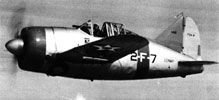 |
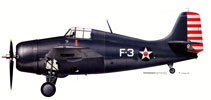 |
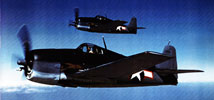 |
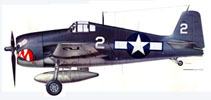 |
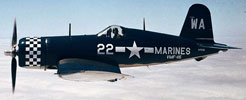 |
Citations:
- "Ships". Fleet Air Arm Officers Association. Retrieved 7 October 2010.
- Cocker (2008), p.79.
- Morison (2002), p.344.
- Poolman (1972), pp.74–75.
- Cocker (2008), p.80.
- Cocker (2008), pp.80–81.
- Poolman(1972), p.98.
- Morison (2002), p.342.
- Poolman (1972), p.57.
- Friedman (1988), p.188.
- Poolman (1972), pp.88–89
- Poolman (1972), p.89.
- Poolman (1972), p.155.
- Poolman (1972), p.135.
- Cocker (2008), p.147
- Poolman (1972), p.79.
- Poolman (1972), pp.102–103
- Plowman (2006), p.112.
- Plowman (2006), p.113.
Bibliography:
- Cocker, Maurice (2008). Aircraft-Carrying Ships of the Royal Navy. Stroud, Gloucestershire: The History Press. ISBN 978-0-7524-4633-2.
- Plowman, Peter (2006). Australian Migrant Ships 1946-1977. Kenthurst New South Wales: Rosenberg Publishing. ISBN 978-1-877058-40-0.
- Poolman, Kenneth (1972). Escort Carrier 1941–1945. London: Ian Allen. ISBN 0-7110-0273-8.
Magazine References: +
- Airfix Magazines (English) - http://www.airfix.com/
- Avions (French) - http://www.aerostories.org/~aerobiblio/rubrique10.html
- FlyPast (English) - http://www.flypast.com/
- Flugzeug Publikations GmbH (German) - http://vdmedien.com/flugzeug-publikations-gmbh-hersteller_verlag-vdm-heinz-nickel-33.html
- Flugzeug Classic (German) - http://www.flugzeugclassic.de/
- Klassiker (German) - http://shop.flugrevue.de/abo/klassiker-der-luftfahrt
- Le Fana de L'Aviation (French) - http://boutique.editions-lariviere.fr/site/abonnement-le-fana-de-l-aviation-626-4-6.html
- Le Fana de L'Aviation (French) - http://www.pdfmagazines.org/tags/Le+Fana+De+L+Aviation/
- Osprey (English) - http://www.ospreypublishing.com/
- Revi Magazines (Czech) - http://www.revi.cz/
Web References: +
- http://www.acesofww2.com/
- http://www.navsource.org/archives/
- http://www.battle-fleet.com/
- Wikipedia, the free encyclopedia: http://en.wikipedia.org/
 Editor for Asisbiz: Matthew Laird Acred
Send Mail
Editor for Asisbiz: Matthew Laird Acred
Send Mail
Please help us to improve these articles with any additional information or photo's.
If you should encounter any bugs broken links, or display errors just email us.
If you love our website please add a like on facebook or follow us on Google+
Please donate so we can make this site even better !!






